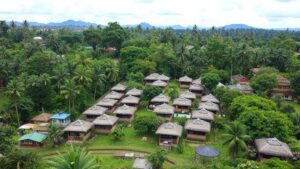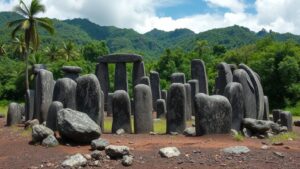Investigating the high desert canyons of the southwestern U.S. for signs of cryptids tied to Native American lore.
Investigating the High Desert Canyons of the Southwestern U.S. for Signs of Cryptids Tied to Native American Lore
The high desert canyons of the Southwestern United States hold a wealth of natural beauty and dramatic landscapes, but they also harbor secrets that intertwine with Native American folklore. Many of these narratives include cryptids–mysterious creatures that are purportedly seen but not scientifically recognized. This article delves into notable canyons in the region and examines the legends associated with these cryptids, seeking to illuminate the intersection of culture, history, and mystery.
The High Desert Canyons: An Overview
The Southwestern U.S. is renowned for its breathtaking canyons, such as the Grand Canyon in Arizona, Antelope Canyon, and Canyon de Chelly. While the Grand Canyon attracts millions of visitors annually, other less-traveled canyons preserve rich stories embedded in the earth. e canyons not only showcase geological wonders but also provide a backdrop for varied cultural histories, especially those of Native American tribes.
Cryptids in Native American Lore
Native American legends often feature profound connections to the land, encompassing a variety of mystical beings. Among these, several notable cryptids recur across tribes:
- Skinwalkers: Originating from the Navajo culture, skinwalkers are said to be witches or shamans that can shapeshift into animals. Their stories often take place in remote areas, particularly near canyon sites.
- Stick Indians: In the Pacific Northwest and parts of the Southwest, these elusive beings are known for their mischievous but sometimes vengeful nature, often believed to dwell in the dense forests and hidden canyons.
- Thunderbird: A prominent figure in various Native American tribes lore, this powerful creature is said to create thunder with its wings and is connected to storms and the heavens.
Notable Canyons and Their Cryptid Connections
Antelope Canyon: Mystery of the Shadows
Located in Arizona, Antelope Canyon is famous for its stunning light beams and wave-like structure. It is often linked to stories of shadowy figures, which some attribute to the spirit of the land. Local tribes recount tales of spirits that protect the canyon and its inhabitants. Cryptid enthusiasts visit to explore these sightings, seeking connections to the Navajo legacy woven into the canyons history.
Canyon de Chelly: Home of the Navajo
Canyon de Chelly, another iconic site in Arizona, is not only a national monument but also sacred to the Navajo people. Legends of skinwalkers are prevalent here, with some claiming to sense their presence during night hikes or camping trips. The canyons rich history, evidenced by ancient cliff dwellings, invites speculation about what exists beyond human perception.
Grand Canyon: The Legendary Thunderbird
The Grand Canyon serves as a canvas for many Native American stories, including those of the Thunderbird. Some reports suggest that certain rock formations serve as lookout points for this immense creature. legend emphasizes a connection to natural phenomena, prompting some to search for signs of this majestic being, especially during stormy weather when thunder is prevalent.
Exploration and Investigation Techniques
For those interested in seeking evidence of these cryptids, multiple investigation strategies can be employed:
- Ethnographic Research: Begin by gathering oral histories from Native American communities. Engaging with tribal elders can provide invaluable insights into legends and cultural importance around cryptids.
- Field Exploration: Conduct explorations during different times of the day and seasons to increase the chances of sightings or encounters. Night explorations may yield different results due to the wildernesss unique nighttime rhythms.
- Photography and Recording Equipment: Use high-quality cameras and audio recording tools while on expeditions. Documenting unusual noises or visual phenomena can contribute to a collection of evidence.
Addressing Concerns and Ethical Considerations
While the thrill of searching for cryptids can be exhilarating, it is crucial to approach these investigations with respect for Native American cultures. Always seek permission when engaging with tribal lands, and understand that many stories are sacred and meant to be honored, not exploited. Approach the narratives with humility and recognize the potential impact of your explorations on local communities.
Conclusion: Finding Meaning in Mystery
Investigating the high desert canyons for signs of cryptids linked to Native American lore is not merely an adventure but a journey through the tapestry of history and culture. Explorers may find that the true treasure lies not just in the evidence of mystical creatures but in understanding the deep connections that native tribes hold with their land. As you plan your exploration, remember to tread lightly, listen to the whispers of the past, and embrace the rich legacies that these majestic canyons offer.
Actionable Takeaway: As you consider your own journey into these breathtaking landscapes, take time to learn about local tribes, participate in cultural exchanges, and ensure that your exploration is ethical and respectful of the rich heritage hidden within these desert canyons.



